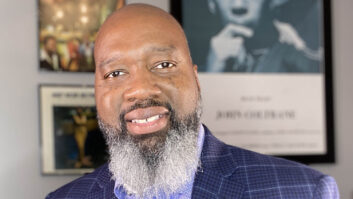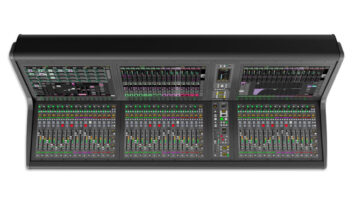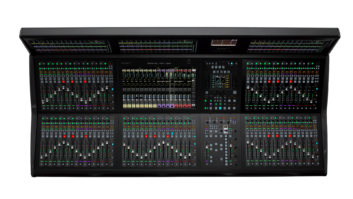
Think of a small, picturesque island in Vancouver, and the phrase“hard rockin’ town” probably doesn’t come to mind. Butmaybe it should, for on one such windswept locale, guitaristextraordinaire Randy Bachman (of Bachman Turner Overdrive and Guess Whofame) has made his home and private recording retreat.

“We just call it the ‘Rammed Earth Barn,’”says Bachman, describing the facility’s unusual construction. Creatinga building using compacted earth or rammed earth techniques is “alot like doing a concrete basement of a house,” Bachman explains.“The whole thing is set on a concrete footing. You put up yourforms, yet instead of 8- to 10-inch-wide concrete walls, the rammedearth walls are about two feet wide, but in two segments. The outerwall is about 18 inches thick, then you leave a 10-inch air gap, andthere’s an inner wall that’s a foot or so thick.”
Beyond providing effective, additional insulation against theCanadian winters, the cavity in the wall doubles as a wiring trough.“We planned a lot in advance, so every wall in the studio andhouse [also a rammed earth design] has cabling for mics, modems,telephones, security and house automation,” Bachman adds. Onemight think that setting cabling into what equates to stone walls mightbe problematic. However, this is no sweat, according to Bachman:“To add an AC outlet, for example, you just drill a circular holein the wall, tap into the wiring, add the outlet and you’re set. If youdon’t want it, pull it out and plaster over it with more earth to sealthe hole.”

Bachman notes that there are other advantages, as well. “Theserammed earth buildings can last for hundreds or thousands of years.There are no mice, no carpenter ants, no termites. There’s nomaintenance or painting required, inside or out. Nothing deteriorates.It’s just solid rock; actually, it’s a lot like cement, which isbasically just clay and water. The earth can be taken from your site,or brought in from other places in the world, such as red Georgia clay.Here on Vancouver Island, it’s bluish-gray. You don’t need a uniformcolor: We used a mixture of brick red, browns and grays, and then threwin seashells, branches and various types of rock, so our walls ended uplooking like cave paintings!”
The rammed earth design simplifies the construction of nonparallelwalls, and the room’s rounded corners create an ideal setting to recordacoustic instruments. But versatility was also important to Bachman:“We can create any type of acoustics. We can leave it live orhang packing quilts on the ceiling or walls to deaden the room. We alsohave 6-by-8-foot, 18-inch-thick foam chunks that we use to build‘houses’ for amps, surround a drummer or break up the roomfor a smaller room sound.”
The ceiling design was key to the room’s sound. “We found atree farm where the trees were bent inward from the constantwind,” says Bachman. “We bought 10 of these huge,boomerang-shaped trees, and used them to make curved beams for theroof. This created a dome-like, 20-foot ceiling, which really improvedthe acoustics.”
Upstairs from the main floor is a huge loft area, divided into acontrol room and an open space that’s large enough to comfortablyhandle a trio. The studio — which features a Neve 8058 MkIIconsole, Neve 5524 sidecar, Digidesign Control|24 with 192kHz ProTools|HD3, a 48-track/96k RADAR system, three DA-88s and a hugecollection of vintage outboard toys — was built by John Vrtassicand Andy Bowmer. “John, who built Vancouver’s Little MountainSound, as well as studios for Bob Rock in Maui, Metallica in SanFrancisco and dozens more, also rebuilt the 8058 and modified it from32 to 64 inputs,” Bachman says. “And after the studio wascompleted, I was able to persuade Andy to stay on as my engineer andtech.”
Ironically, the studio started out by “accident,”Bachman recalls. “It was originally meant to be a barn foranimals, but ended up costing so much money that I decided to use it asa studio. The local music community here was dying for a place torecord, so we started doing acoustic, folk and bluegrass and then didrock projects for other bands, as well as for my son Tal and my ownwork.”

Bonus Pics…

Bachman’s studio

Got gear? Bachman’s rack of toys

The guitarist himself, with a close friend
How does Randy Bachman get that signature guitar sound? Find out here.
Want to copy Bachman’s set-up? Check out his equipment list.
What are Bachman’s favorite toys? Click here.





